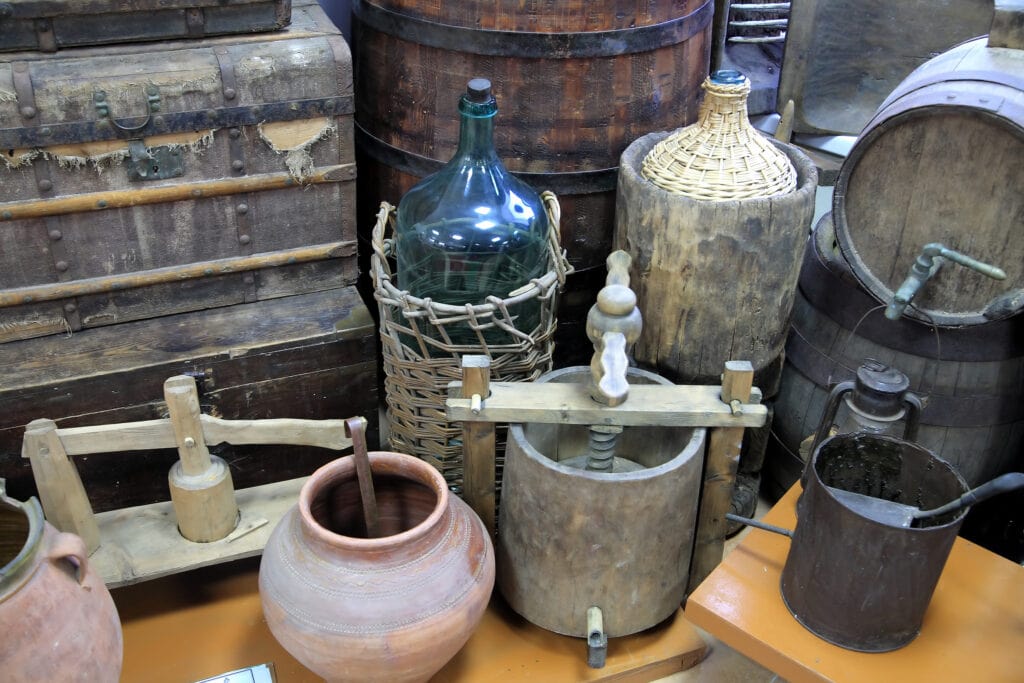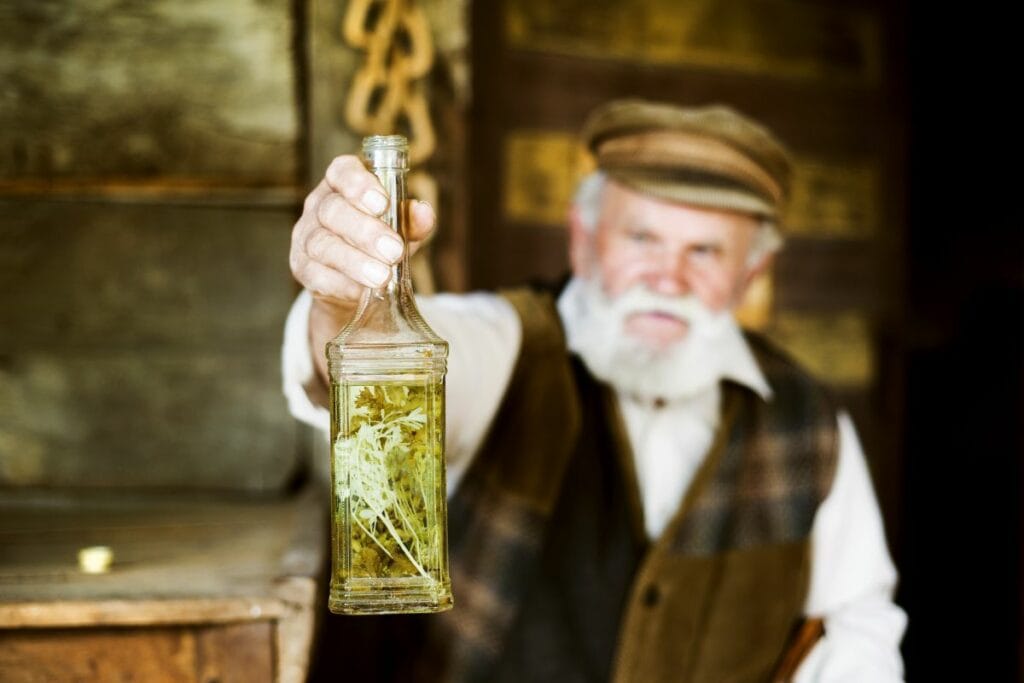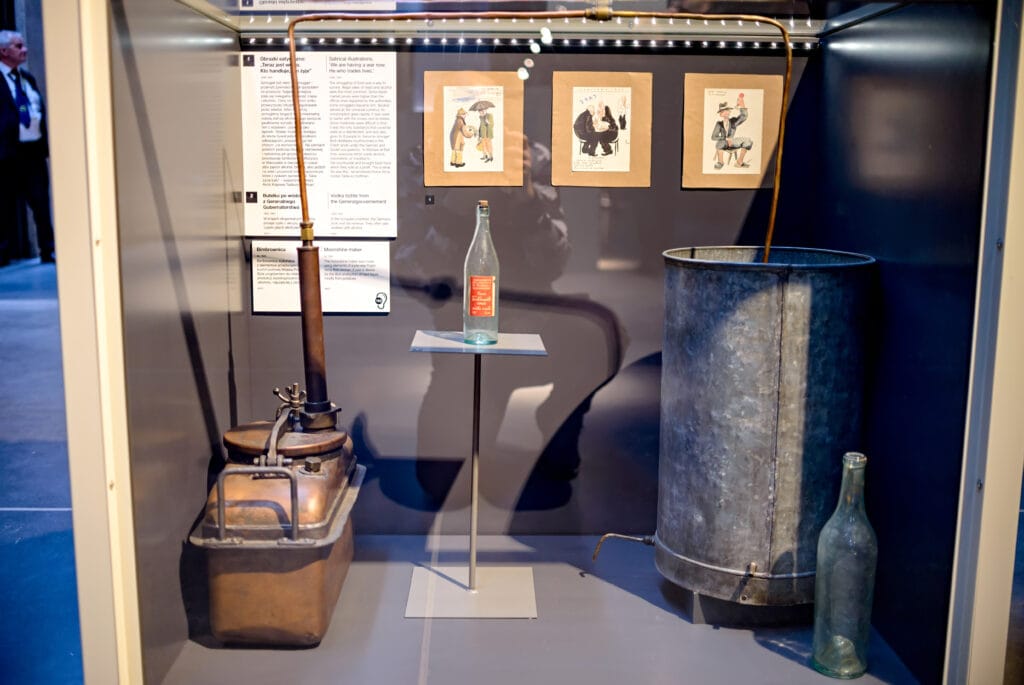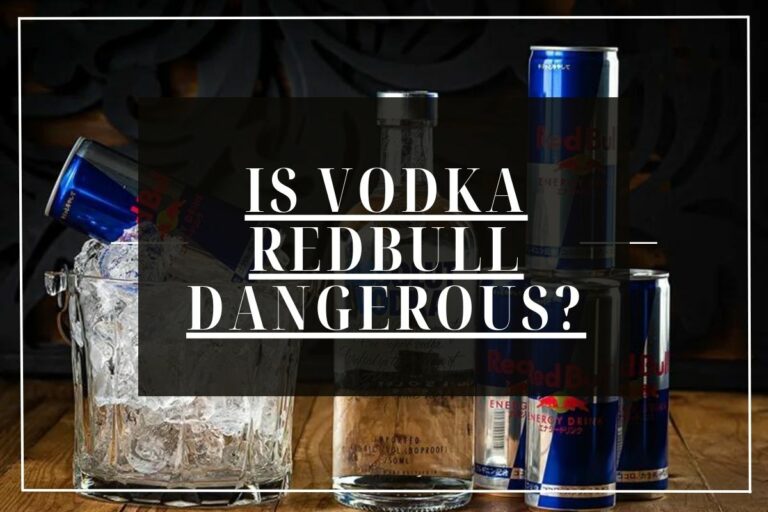From Russian Roots to American Icon: The Fascinating Journey of Vodka
Ever wondered about the roots of your favorite clear liquor? Vodka, beloved worldwide, has a history that dates back to the 8th or possibly 9th century. In this post, we will walk you through vodka’s rich past—from its mysterious origins in Eastern Europe to becoming an iconic global spirit.
Strap in and get ready for a spirited journey!
Origin and Early History of Vodka
The first documented production of vodka traces back to Russia in the 9th century, later followed by a significant moment with the introduction of aquavit. Centuries forward, specifically in the 15th century, Poland welcomed vodka into its culture and traditions.
First documented production in Russia in the 9th century

Monks in Russia took on the task of vodka production in the 9th century. Having discovered distillation techniques, they began turning fermented grains into a potent clear liquor. The Vyatka Chronicle serves as evidence of these early vodka-producing times and lends credence to Russia’s claim at being its homeland.
As per historical records, it wasn’t until 1751 that formal documentation recorded “vodka” as an alcoholic beverage in Russia. This period marked the initiation of what we know today as one of the world’s most consumed spirits – vodka.
The introduction of aquavit in Russia in the late 14th century

The arrival of aquavit, a longstanding traditional spirit, transformed Russia’s alcohol scene in the late 14th century. Originating from Scandinavia, this distilled beverage known for its potent flavors found wide acceptance among Russian people as they began experimenting with local ingredients to add multiple dimensions to their spirits.
Innovation colored this period as a variety of summer berries, aromatic herbs and strong spices became commonplace for infusing into aquavit.
This era also marked an important shift in Russia’s homemade spirits production methods. Traditional distillation techniques experienced significant enhancements owing to the introduction of flavorful aquavit.
Concurrently, vodka was gaining prominence within the country’s borders. Thus, not only did aquavit bring fresh gustatory experiences but it also laid sturdy groundwork for current distilling processes used today in vodka brands worldwide.
This transformative period remains deeply interwoven into the historical origins of vodka as we know it today.
The emergence of vodka in Poland in the 15th century

Polish distillers began crafting vodka during the 15th century, marking a major milestone in alcohol production. The beverage got its name “vodka” from “Akta Grodzkie,” a set of documents dated back to 1405.
It differs significantly from earlier spirits due to its unique process of making and high alcohol content derived from grain fermentation. This shift to distilled spirits crafted vodka’s distinct identity within Poland’s drinking culture.
Historians often quarrel about whether Russia or Poland can claim the invention though some sources affirm that Polish vodka might have existed as early as the 8th century – well before it earned recognition in historical texts.
Development and Spread of Vodka
Sweden started to produce vodka in the 16th century. Its popularity surged in Russia during the 18th and 19th centuries. The United States got its own taste of this clear distilled alcohol in the 20th century, marking a significant milestone in vodka’s global reach.
Vodka production in Sweden in the 16th century
Sweden began producing vodka in the 16th century, marking a pivotal moment for this beverage. Initially, Swedes used grapes and grains to craft their alcohol, but they soon discovered potatoes as an effective ingredient.
This unique transition greatly changed the distillation process and laid a creative foundation for future innovations in vodka production. The Swedish government played a crucial role in this era by enforcing monopoly over national liquor consumption and production.
Consequently, its influence led to significant advancements in fermentation techniques which impacted not just Sweden’s beverage industry but also boosted cross-cultural exchange of knowledge on alcohol manufacturing methods.
Vodka production took center stage during this time, having spread from Russia and Poland across continental borders into Sweden that was ready to embrace change with agrarian resources at hand.
Vodka’s popularity in Russia during the 18th and 19th centuries
Vodka’s strength increased dramatically during the 18th century, igniting a surge in its popularity across Russia. The country saw a rise in both production and consumption as the spirit claimed an integral role within social customs.
It was not uncommon for nearly every meal to be accompanied by this potent drink.
Involvement from the Russian government also significantly contributed to vodka’s burgeoning reputation throughout these centuries. They maintained strict jurisdiction over alcohol distillation processes, placing vodka at the heart of their economic policy.
By doing so, Russia ensured that vodka turned into a crucial element within businesses involving alcoholic beverages industry and national economy for much of the 19th-century era.
Vodka’s arrival in America in the 20th century
Vodka set foot in America during the 20th century, signifying a notable expansion of this intoxicating liquid. Gaining popularity wasn’t an overnight success; vodka struggled until early 1950s to carve its niche among American patrons.
World War II played catalyst when Russia and America stood together as allies, smoothing vodka’s acceptance in American culture. Originating from fermented vegetable or grain mash, vodka boasted of high alcohol content making it distinctively strong amongst other beverages.
Russian techniques like charcoal filtration to eradicate impurities further enhanced its quality and appeal. Today, this spirit celebrates a monumental presence globally with America being one of its biggest markets.
Prohibition and Innovation
Discover how vodka played a crucial role amid Prohibition era in the United States and learn about the significant innovations that transformed vodka production during the early 20th century.
Dive deeper to unfold this captivating narrative!
Vodka’s role during Prohibition in the United States
During the Prohibition era in the United States, from 1920 to 1933, vodka’s popularity soared. Drinking alcohol was still prevalent despite it being outlawed by law, resulting in a surge of illegally produced alcohol known as moonshine and bootlegging practices.
Vodka slid into this landscape quite fittingly due its easily unnoticeable scent and flavor when mixed with other non-alcoholic beverages. This made vodka an ideal choice for covert drinking sessions in underground bars or speakeasies that proliferated during this time.
Organized crime syndicates capitalized on this demand too, smuggling vast amounts of liquor across borders to meet consumer thirsts. The traditional vodkas from Eastern Europe and Russia found their place amongst American drinkers who were looking for alternative spirits to whiskey and brandy – staples halted by prohibition rules.
The shift shaped cocktail culture significantly since mixologists had to innovate around these limitations hoping not alert the temperance authorities about liquor serving venues.
Innovation in vodka production during the early 20th century
Vodka production saw a dramatic shift in the early 20th century, especially during the Prohibition era in the United States. Because vodka was deemed medicinal, it dodged Prohibition’s restrictions on alcohol.
This loophole stokes advancements as distillers navigated around tighter regulations and supply constraints.
New raw materials emerged on the vodka scene including beets, potatoes, and other grains. The innovation resulted in an explosion of flavor profiles for aficionados to enjoy. In response to high demand for diverse tastes, producers also started infusing their concoctions with fruits, herbs, and spices.
The Prohibition period sparked imaginative methods of distribution that added to the allure of this potent spirit. Bootlegging operations grew while hidden bars known as speakeasies sprouted up across cities providing secretive venues for chic society gatherings.
Vodka’s Rise to Prominence
Explore the mid-20th century boom in vodka’s popularity and see how the introduction of flavorful varieties broadened its appeal globally. Witness vodka’s transformation from humble origins to a celebrated spirit, enjoy more by delving into this chapter!
Vodka’s popularity in the mid-20th century
The mid-20th century saw a dramatic increase in vodka’s popularity. This time period marks an important shift – before the 1950s, you would rarely see Americans sipping this clear spirit.
But things began to change as vodka became associated with the glamorous cocktail culture that flourished around this time. It wasn’t just its versatility as a mixing liquor that made it appealing; people were also drawn to its perceived purity—a selling point considering vodka is typically made from water and basic ingredients like wheat, rye, or potatoes.
Additionally, historical context came into play: World War II forged alliances between Russia and America which further introduced Russian vodka onto American soil promoting its consumption.
The introduction of flavored vodka in the late 20th century
The late 20th century saw a game-changing milestone in the vodka industry – the introduction of flavored vodka. Drawing inspiration from Russian and Eastern European traditions, distilleries started infusing vodka with indigenous fruits like blackberries to create natural flavor profiles.
This innovation represented an exciting twist on traditional practices, revitalizing interest around this historic spirit. Enhanced by advancements in distillation techniques, these infused vodkas offered greater depth while retaining their core character.
As flavored vodka began flowing freely across borders due to distribution improvements, it solidified its place within popular culture drink recipes worldwide. From being predominantly potato-based in its earliest forms, modern-day vodka’s versatility was now unequivocally demonstrated as grain-infused varieties also gained popularity.
The Modern Vodka Industry
“Peel back the label on the booming global vodka industry, where modern innovation meets rich history and explore how international brands take to creative methods in their production and marketing tactics.
Stay tuned to unravel more!”.
Current trends and innovations in vodka production
Vodka production today leans heavily on creativity and sustainability, transforming the industry at its foundation. Flavored vodka is taking center stage in 2022, with unique flavors driving sales and wooing new customers.
Fruit-infused vodka represents a significant innovation, blending health benefits within an alcoholic beverage. Brands like Good Vodka are creating ripples by combining their commitment to environmentalism with premium vodka production—employing the use of excess food waste such as fruit skin during distillation processes for a more sustainable practice.
Craft and artisanal vodkas also gain momentum in recent years due to their focus on quality over quantity – promising unique flavor profiles sourced from organic ingredients. This modernized approach extends not just to the bottle contents but also branding strategies that leverage current marketing trends while forecasting future innovations within this ever-evolving sector.
The global market for vodka
The global market for vodka showcases a significant growth in recent years. It is now the largest internationally traded spirit, with a remarkable value projected to reach US$65.44 billion by 2028. The following table provides a snapshot of key details pertaining to the global vodka market.
| Market Fact | Detail |
| Market Size in 2022 | US$44.54 billion |
| Expected Market Size in 2023 | US$39.96 billion |
| Expected Market Size in 2028 | US$65.44 billion |
| Predicted growth rate | 5.5% between 2023 and 2033 |
| Major Market Player | Russia, albeit with a decline |
| Major Producer | The United States |
| Consumption | Billions of gallons consumed globally each year |
The predictions for the vodka market signify its increasing acceptance and popularity among consumers worldwide. Despite the decline in the Russian market, vodka retains its iconic status, and new trends and innovations continue to strengthen its market share.
Vodka’s Cultural Significance
Explore the profound cultural influence of vodka, from its central role in Russian and Polish traditions to its prevalence in modern cocktails and media. Delve into how this clear spirit managed to seep into various aspects of lifestyle, celebrations, literature, cinema and beyond! Is your curiosity piqued yet? Stay tuned.
Vodka in Russian and Polish culture
In Russian culture, vodka reigns supreme. Created in the 9th century, this distilled spirit quickly became a staple in societal changes throughout Russia’s history. As part of national identity and drinking customs, Russians often imbibe vodka chilled during celebrations or social gatherings.
Polish culture embraces vodka with similar enthusiasm. Known for its quality and historical significance, Polish potato vodkas have provided solace during difficult times since the 19th century.
Traditional recipes passed down through generations contribute to Poland’s drinkable heritage – a tradition that transcends merely being an alcoholic beverage becoming instead, a cultural practice deeply embedded in Poland’s DNA.
Vodka’s role in cocktails and mixed drinks
Vodka holds a substantial role in the realm of cocktails and mixed drinks, earning it a prime position on every bartender’s shelf. Its clear and colorless nature presents as an almost blank canvas for numerous flavors to be layered upon, yielding delectable beverages.
Cocktails such as the vodka martini perfectly showcase vodka’s ability to blend flawlessly with other spirits or mixers, successfully enhancing their taste without overpowering them.
The vast array of vodka-infused concoctions available around the world serves testimony to its significant contribution to this lively drink scene!
Vodka in popular culture and media
Vodka has quite a significant role in popular culture and media, often being the liquor of choice in many movies, TV shows, and songs. For example, James Bond’s favoured ‘shaken not stirred’ martini would be incomplete without vodka.
Similarly, entire series like ‘Mad Men’ have glorified the cocktail hour where vodka invariably shines as a staple spirit. This prominence is also seen in music with numerous singers from various genres releasing chart-topping hits such as “Vodka” by Korpiklaani or even Pitbull declaring his love for Voli Vodka – his own brand!
Conclusion
The fascinating journey of vodka highlights its persistent versatility. From ancient medicinal ingredient to popular party spirit, vodka’s history is steeped in cultural and societal changes over the centuries.
Today, it stands as a giant in the global spirits industry confirming that this clear beverage has timeless appeal. As we raise our glasses to toast, let’s remember: there’s always more than water in vodka’s tale – it unfolds rich narratives from every corner of the globe.




